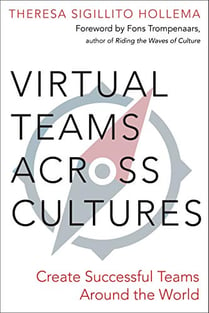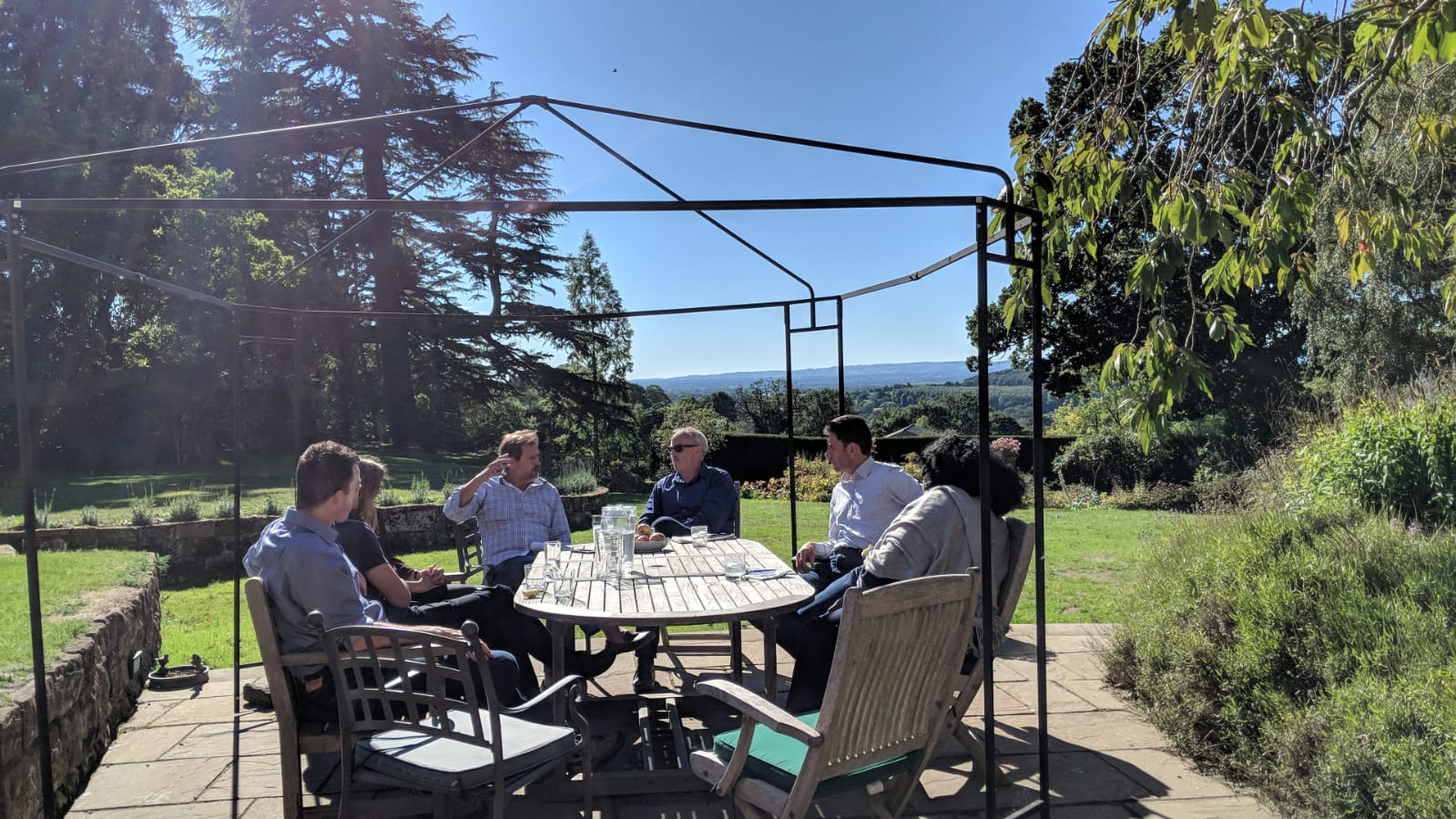Leaders of virtual teams are overlooking a key ingredient to success
.jpg?width=50&name=TS%20Hollema%20-%20Copy%20(2).jpg) Theresa Sigillito Hollema
·
4 minute read
Theresa Sigillito Hollema
·
4 minute read
Look on any successful leader’s office bookshelf and you’ll probably spot several books about cultural diversity, and several books about working remotely. But rarely will you spot a resource that combines the two topics together. This is despite the fact that they occur simultaneously - many people who work virtually, work with colleagues from other cultures.
Scratching her head at the absence of resources around virtual teams across cultures, RISE consultant Theresa Sigillito Hollema decided to use her years of experience as a cultural consultant to bridge the gap herself in her book, Virtual Teams Across Cultures: Create Successful Teams Around the World.
It couldn’t have come at a more urgent time. Rapidly accelerated by the coronavirus crisis, remote working is now commonplace across the globe, raising myriad questions around long-held beliefs about how people connect and collaborate at work.
Through her synthesis of academic research, interviews with leaders and real-life case studies, Theresa explores the impact of cultural diversity and geographical distance on remote teams, offering leaders a map for navigating the new virtual workplace.
Why did you decide to write about virtual teams and culture?
Even before COVID-19, people were working virtually with colleagues and stakeholders in other countries and they realised it was different than working in the same office. Still, they were not sure what to do. Many leaders applied the approach they used for colocated teams and found they could not have the same impact or achieve their goals. I often heard managers and teams describe their virtual experience as frustrating and lacking connection.
Like many others, I also saw the potential – the ability to connect with talented people everywhere, to have a greater geographic impact and to learn from people in other locations.
I had been working with clients to explore cultural diversity, leadership, team development and virtual working for many years and I wanted to contribute to the literature where I saw a gap – bringing cultural diversity, virtual working and leadership together.
Like many others, I also saw the potential – the ability to connect with talented people everywhere, to have a greater geographic impact and to learn from people in other locations.
What are some key insights you can share with us from your book?
An important insight I'd like to share is how cultural diversity shows up on virtual teams in the following three ways:
- Within the team: Colleagues from different cultures communicate, make decisions and other business processes in different ways, often based on cultural norms
- Between the locations: Colleagues in different locations form subgroups and often use cultural stereotypes as a descriptor for their distant colleagues
- Outside the team: Each team member is located in a cultural system which may conflict with or influence the norms of the virtual team
Another insight is the distinction regarding different types of virtual teams and the link between task complexity and need for team connection.
Teams with low levels of complexity and interdependence do not need to spend time on building relationships. On the flip side, team members who need to work closely to achieve their tasks need to know each other and agree on shared working practices.
In my work, I notice that this is often where teams tend to underestimate the amount of connection necessary to achieve the tasks. They do so because the geographic distance and cultural diversity makes them feel more separated than they actually need to be.
What can leaders in organisations learn from these insights?
The virtual leader can no longer use the features of physical presence such as ‘management by walking around’ or charisma. Instead, the leader focuses less on themselves as the centre and more on the integration and empowerment of the team.
Not only does the mindset develop, the activities where the leader spends his or her time would change. For instance, less on making decisions and more on coaching and support.
The virtual leader can no longer use the features of physical presence such as ‘management by walking around’ or charisma.
What are your thoughts on the coronavirus crisis and its impact on the way we work virtually?
I am part of online communities who think about virtual working - including RISE who have fantastic collective expertise in this space - and none of us would advocate for the way everyone was suddenly remote. We prefer planning, training, and using physical presence as one of the collaboration tools.
But now that we are at this moment, I am not surprised by the number of people and companies who want to incorporate more virtual work into their future way of working.
In the beginning of the pandemic, employees quickly adjusted to working away from the office by thinking practically about how to run meetings and use the technology. Now that virtual working is becoming a longer term situation, I notice that leaders and teams are focusing on the deeper values and norms of their organisations.
As one VP explained, “Before COVID-19 we always spoke about trust as important. Now we have to rely on and trust our employees and teams in a way we never did before.”
I think the technology will continue to improve and it will be easier to collaborate virtually. This means the blockades will come from the leader and team themselves – how they feel about cultural diversity, virtual working and leading distributed teams and whether they have developed the mindset and competences to work globally.
What kinds of things did you learn about yourself and your work while writing the book?
On a personal note, I could say that this book is the intersection of ‘what the world needs and what I can contribute,’ but it did not start that way. I had never written a book, nor intended to do so, but felt that it could tap into a part of me that had not been expressed before. In the beginning, I worked with a personal coach to examine and overcome my personal blockades to this journey.

Nearly the entire process of writing and publishing the book was virtual. I am located in the Netherlands. My editor was in Vienna, my cover designer in New York, my interior designer in Iowa, my copywriter in the UK and more. I wanted the people who could work with me to achieve my goals and I did not think twice that they needed to be local. We are becoming more and more location-irrelevant.
Ultimately, it’s about people and connection. I hope that my book will help leaders and teams to embrace this idea.
.png?width=120&height=120&name=RISE%20Logo%20(7).png)
%20(1).png?width=133&height=133&name=Compass%20Coasters%20(87%20x%2087%20cm)%20(1).png)
-1.png)
.png)
